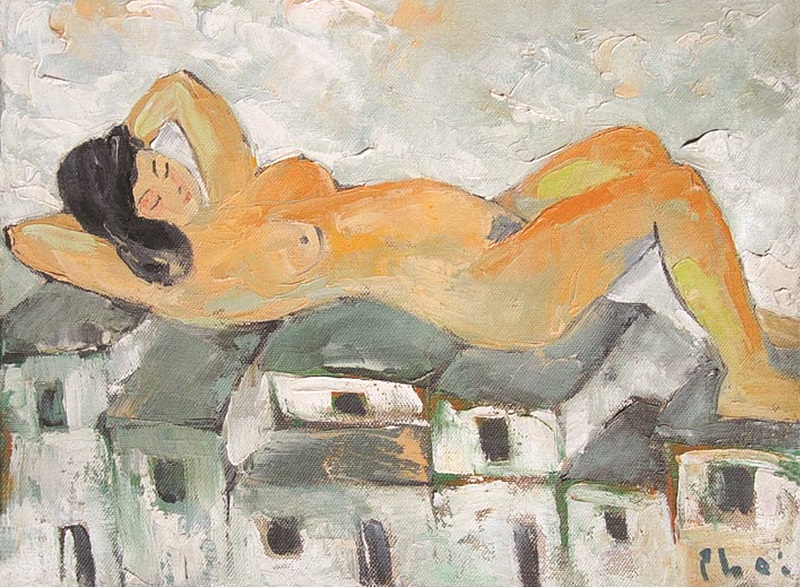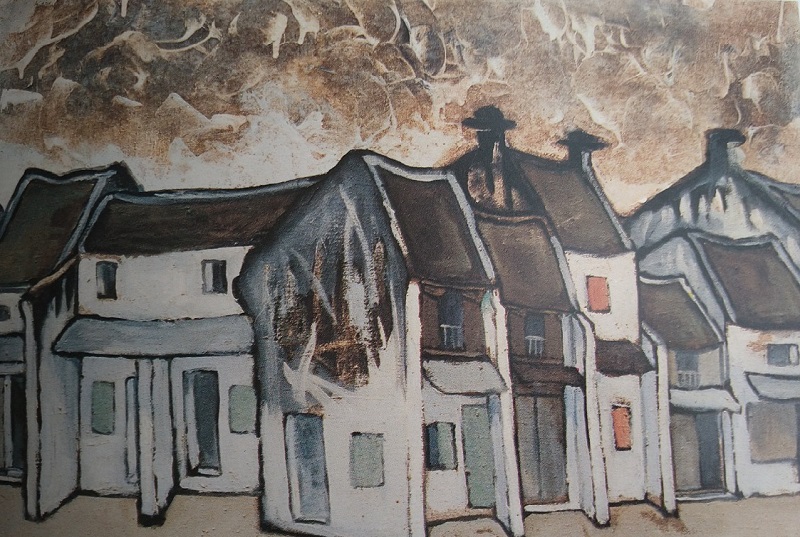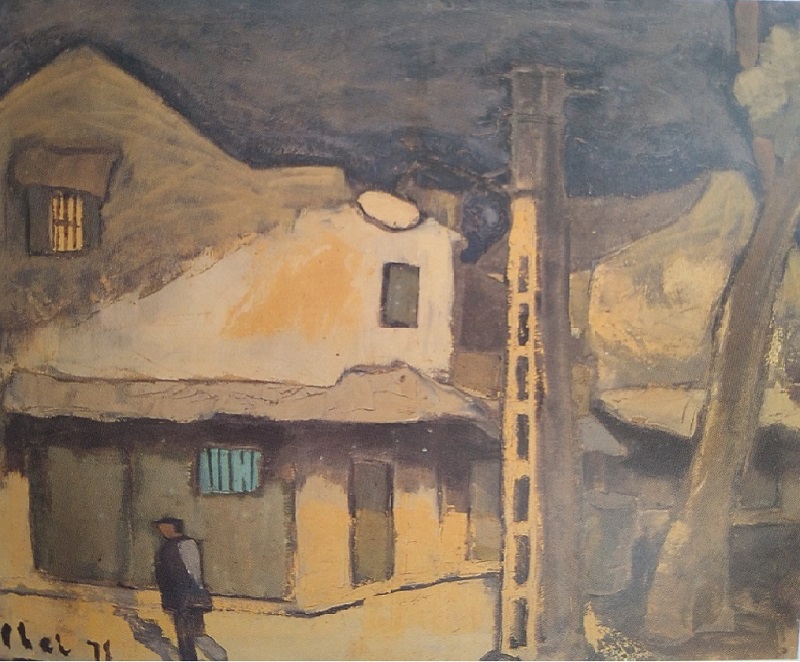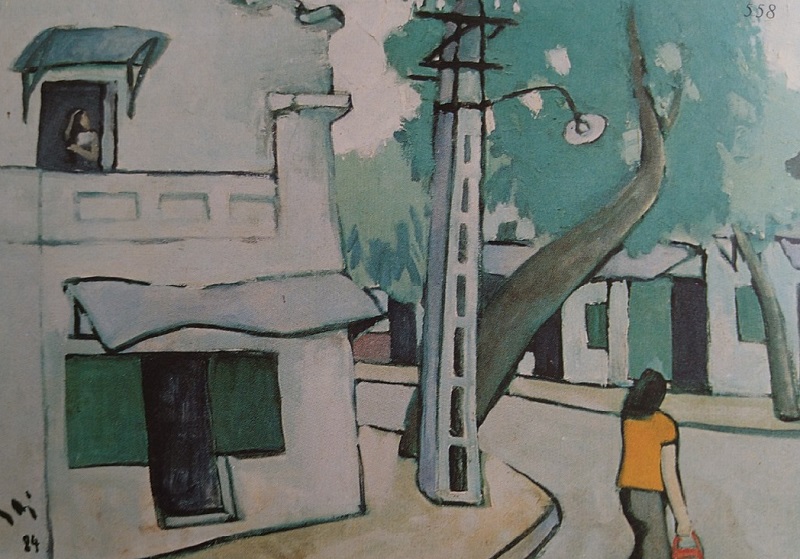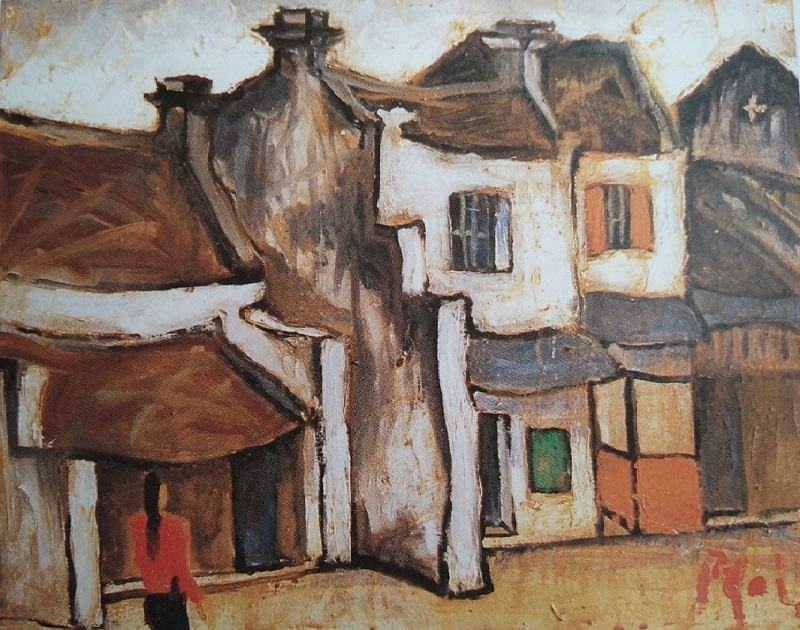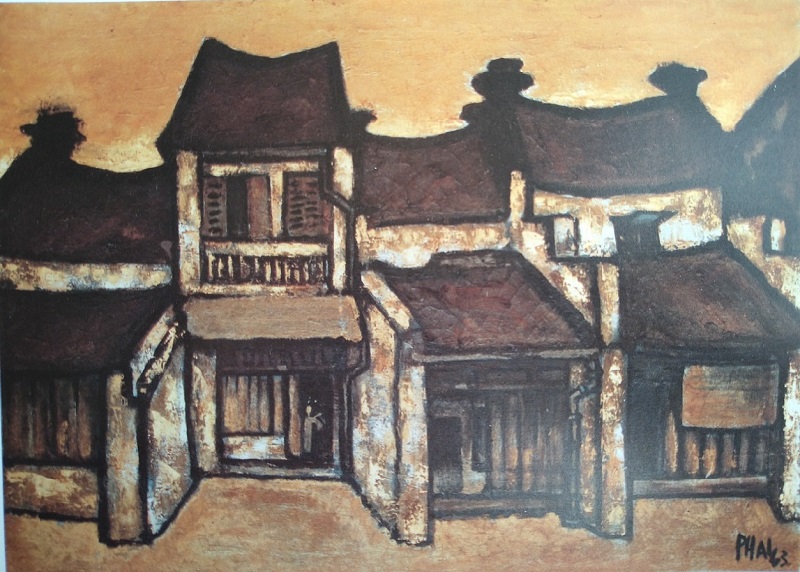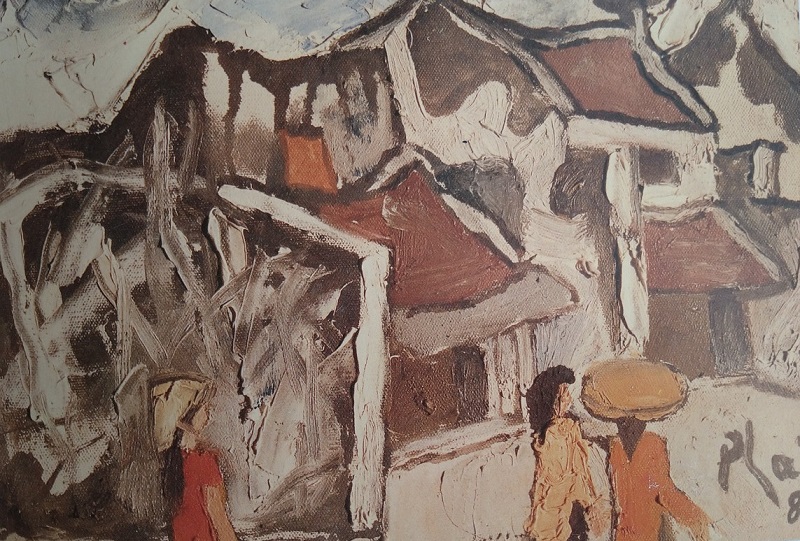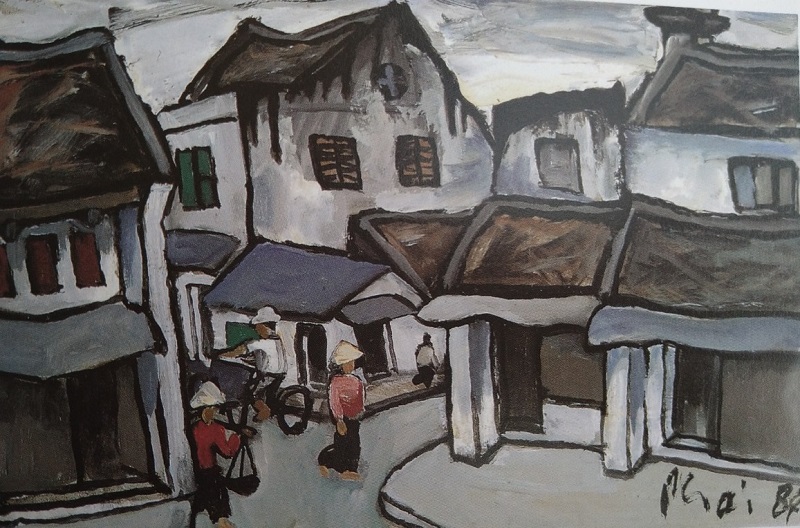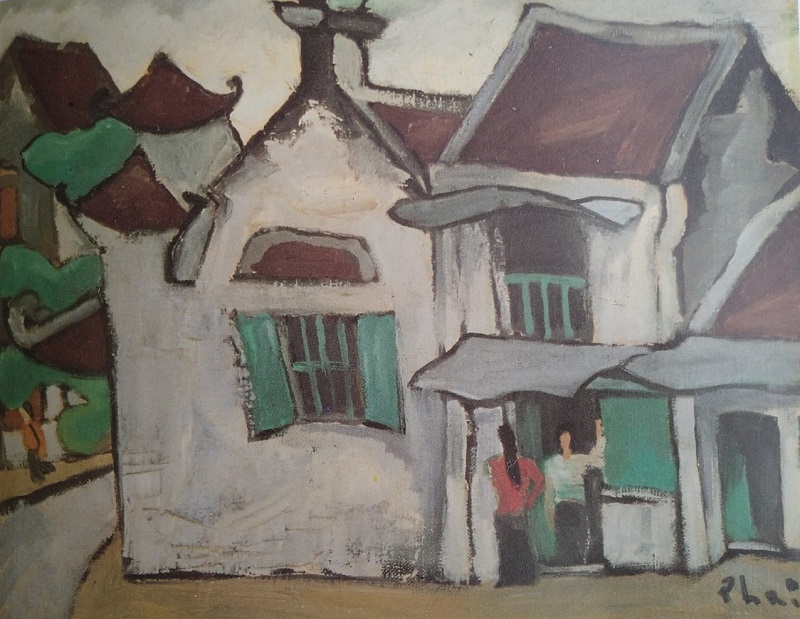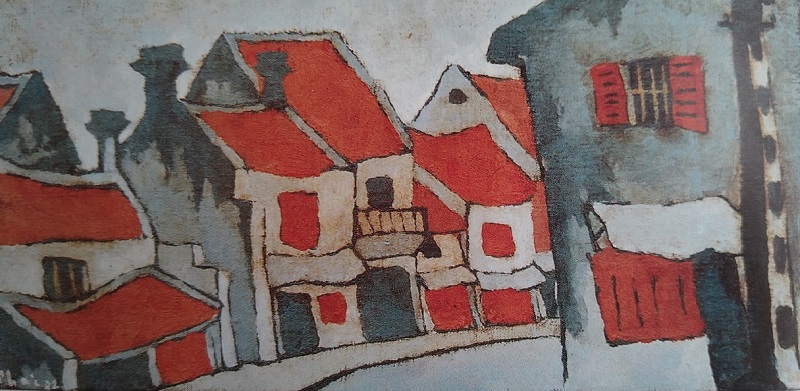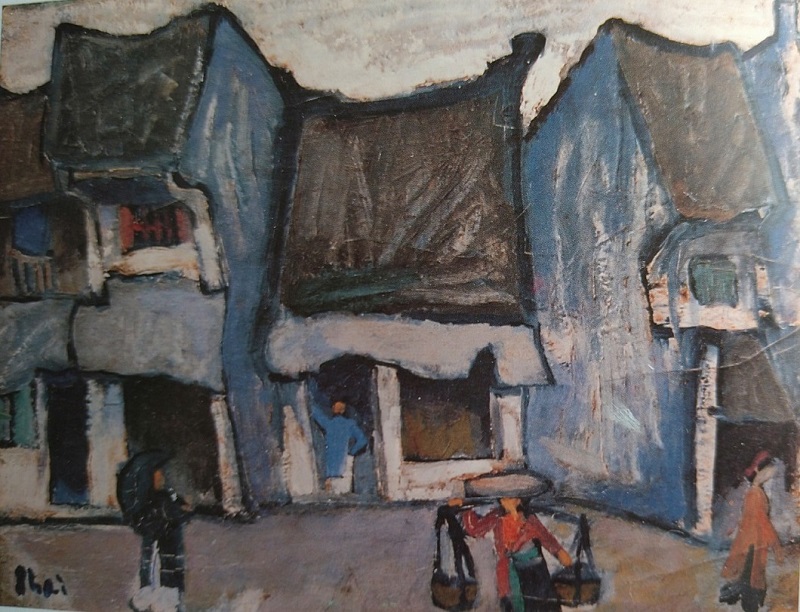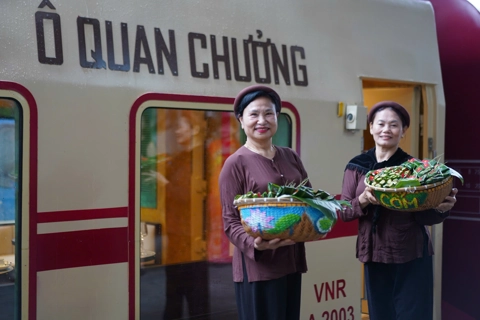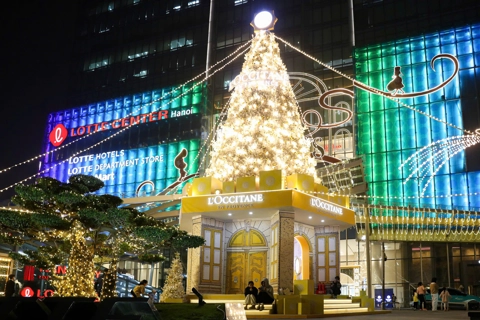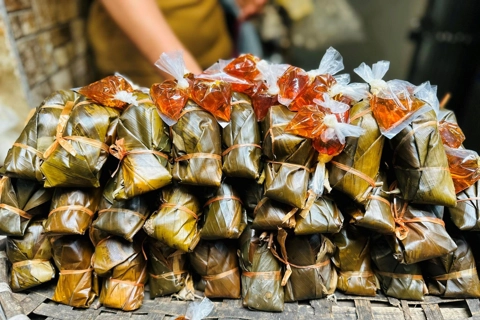Illustrated paintings of Hanoi streets by Bui Xuan Phai
Bui Xuan Phai (1920-1988) is the artist who discovers Hanoi’s beauty. He is considered to have rebuilt the images of Hanoi’s ancient streets since peace was restored after French war in 1954.
There is absolutely no doubt that Bui Xuan Phai is the artist who discovered the beauty of Hanoi. Phai is the first ever Hanoian painter who draw the ancient streets after the revolution of French war in 1954. Saying so does not imply that he had drawn them in order or drawn all of them. There are the streets that he painted tens of times (Ma May, Hang Bac, Hang Tre, among others).
| The painting entitled “The nude girl sleeping on the roof” by Bui Xuan Phai. |
Sometime, the streets emerge clearly and coherently, and sometimes they are just grasped by him as a general structure. There are paintings with people and shops, and there are also paintings without them. His street painting was performed as a routine, it seems he had the need of drawing Hanoi ancient streets every day.
The below paintings of Hanoi’s ancient streets were drawn by Bui Xuan Phai from 1952-1966. The attached explanation of Hanoi’s streets names by him has been taken from the book “The summery History of Hanoi’s Street Names” publishes in 1964.
In this book, alongside with the photos are pictures of Hanoi’s ancient streets illustrated by Bui Xuan Phai.
Hang Mam street
| "Hang Mam street" - oil on canvas. |
Hang Mam street is between Tran Nhat Duat and Hang Bac streets. In the old times, the street was specialized in trading fish sauces and other agricultural products. About 30 to 40 years ago in the street there came into being other trades such as beer brewery tombstone making and terra - cotta ware manufacture, among others.
At the time when the Thang Long capital was in existence, the street was in the location called Uu Nghia Gate (colloqually called Hang Mam Gate). In the French time the street was called "Rue de la Saumure" (the French equivalent of the Vietnamese name). Hang Mam has become the official name of the street since the revolution in 1954.
Hang Ma street
| "Hang Ma street" - oil on paper board. |
Hang Ma street runs from Hang Duong - Hang Buom cross - road to Phung Hung street. Now in the middle of the street, at number 56 is located the Yen Phu Commune House.
This street was specialized in making paper money, flowers, slippers, among others for worshiping. That is how the street got its name.
The street also produces and sells children's paper toys during the Mid-Autumn Festival, paper flowers and lanterns for festivity decoration.
| "Thuoc Bac street" - Oil on canvas. |
Thuoc Bac street is between Hang Ma and Hang Thiec streets. About 100 years ago a number of people from the Da Nguu village (former Van Giang district, Bac Ninh province) moved here to open Chinese herb medicines shops. This is how the street got its name.
The French map of Hanoi of 1890 recorded the street in the name of "Rue de medicaments" meaning Thuoc Bac. This French name existed throughout the French time. Since the Revolution it has been called Thuoc Bac street.
Hang Bac street
| "Hang Bac street" - Oil on canvas. |
Hang Bac street runs from Hang Mam street past Hang Ngang - Hang Dao crossroad to Hang Bo street. Hang Bac is one of the 36 streets of the former Thang Long capital. It was specialised in casting silver bars and exchanging zinc coins and silver changes.
The people of this occupation gathered and formed into trade group. Most of them came from the Trau Khe commune (next to Dong An), Binh Giang district, Hai Duong province.
| "Hang Bac street" - Oil on canvas. |
According to the oldest family annals that exist (of the Hoang family), at first there were two persons from Trau Khe coming to Thang Long to stay at Phuc Co ward (about the head of present Nguyen Du street, near the present Hue street).They worked as gold and silversmiths.
In the Tay Son time (17781802), a gold- smith who after his marriage was sent to live with his wife's family in No Ha, the Truong market (or Kim Ngan - Truong Thi) and became the trade creator there.
| "Hang Bac street" - Oil on canvas. |
At present there are two Commune Houses: Kim Ngan and Truong Thi worshipping the silver trade creator (legendry Hien Vien Hoang De, Creator of all trades), which belong to the Trau Khe villagers.
Hang Bac street is a most ancient street of the Thang Long capital's industrial and commercial centre with several temples are now still in existence, such as: The Kim Ngan Commune House, The Dung Han Commune House, the Tho Commune House, among others.
Phat Loc alley
| "Phat Loc alley" - oil on paper board. |
The Phat Loc village or today Phat Loc alley is the home village of the Bui family. This family migrated to the place and named it after their home village.
According to the annals of the Bui family (whose ancestor - worshiping house is located at 30 Phat Loc alley), in 1717 the 11th ancestor of the Bui family left his home village for Thang Long to study at Quoc Tu Giam and later settled in the Ha Khau ward, Tho Xuong district or Hanoi’s Hoan Kiem district nowadays.
| "Phat Loc alley" - oil on canvas. |
Ma May street
Ma May street is between Hang Buom and Hang Bac streets in today Hanoi's Old quarer area.
| "Ma May street" - oil on canvas. |
The street was comprised of two streets: Hang May street that was next to Hang Buom and with shops selling rattan and cane and Hang Ma that was next to Hang Bac street and with shops selling paper-joss ware used in funerals such as catafalques, paper and bamboo puppets to be burned in worship.
| "Ma May street" - Oil on paper board. |
This Hang Ma street came into existence before the present Hang Ma street near the Dong Xuan Market.
That is why when the Hang Ma street near the Dong Xuan Market came into being, the Hang Ma street next to Hang Bac street was referred to as "the Lower Hang Ma street" to be distinguished with the new Hang Ma street where paper flowers and lanterns for worshipping were sold.
| "Ma May street" - oil on canvas. |
Later Hang Ma and Hang May streets were incorporated into Ma May street. In the French time it was called Quan Co Den street (Rue des Pavillions Noirs) due to the fact that at the time of the French army's invasion of Hanoi after Guardnier was killed (1873), Quan Co Den army wing led by Luu Vinh Phuc came to stay in the street and Hang Buom street.
After the Revolution (1954) the street name was Ma May name has remained the same since.
(Source: Bui Xuan Phai - Life and Work by Bui Thanh Phuong and Tran Hau Tuan/ Fine Arts Publishing House 1988)

